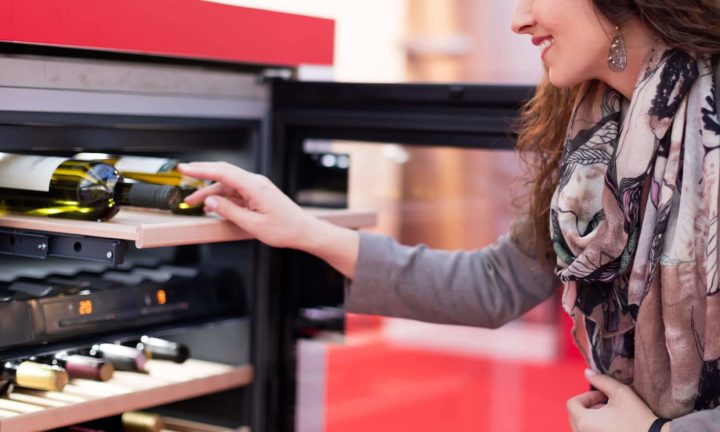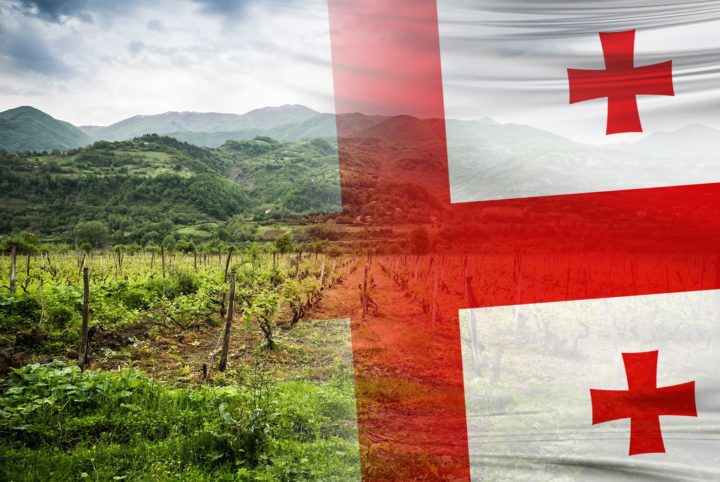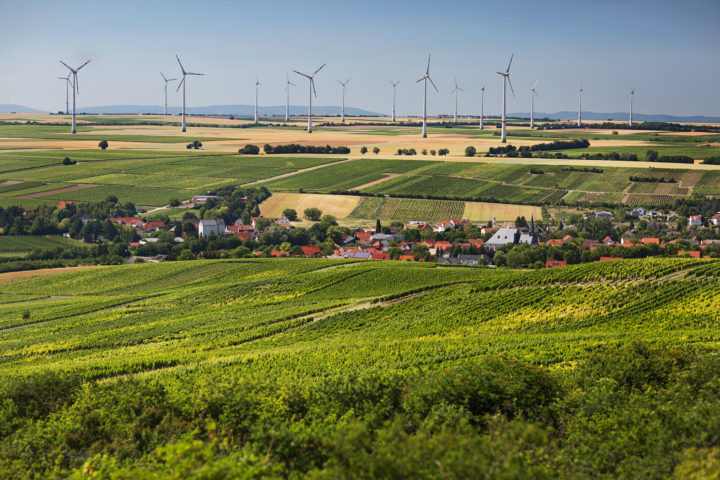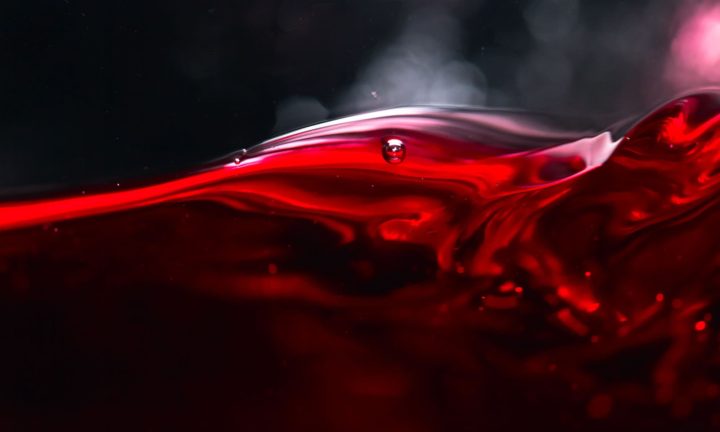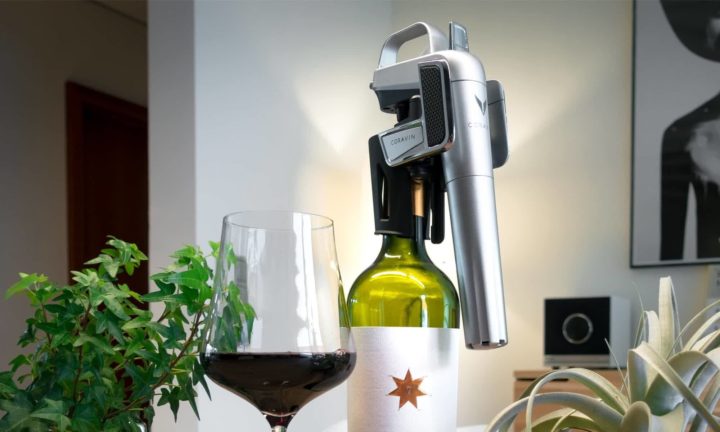Red wine that is too cold tastes inconsequential, and white wine that has stood too long in the warm no longer provides a sparkling pleasure. Accordingly, how a wine tastes depends on the temperature. Therefore, there are some rules to follow to get the aromatic peaks out of your wine.
With the wrong drinking temperature you can ruin any red or white wine and spoil your enjoyment experience. In our article we explain the correct drinking temperatures for the different wine styles, which temperature-dependent ingredients there are and how wines can be brought to their optimal temperature. In addition, we give you tips on the way, how you can discover the taste difference yourself, if your wine is incorrectly tempered. After that, you’ll know exactly what to do to enjoy your wine properly.
Alcohol, Acidity & Aromas: Finding the Right Drinking Temperature
A wine contains three important temperature-dependent ingredients: alcohol, acidity and aromas. From these important ingredients, the influence of temperature can be understood very well and the importance for the enjoyment of wines can be deduced.
The alcohol in the wine not only provides the good mood, but is also an important flavor carrier for its flavors. As the temperature rises, the alcohol becomes more prominent. Powerful red wines can tolerate this well, while delicate white wines are dominated by alcohol even at lower temperatures.
The cooler the wine, the more the acidity comes to the fore. If you want the acidity of a white wine to refresh you, it is recommended to drink the wine cooler. The situation is similar with the tannin in red wine. Warmer red wines are perceived as softer. At cooler drinking temperatures, the tannins come into play more.
Aroma and taste result from the aroma compounds of the wine and are extremely temperature dependent. White wine has many volatile aromas and therefore must be served well chilled. However, in order for the inert aromas in red wine to develop, it requires higher temperatures.
As you can see, determining the right drinking temperature is a balance of acidity, alcohol, volatile flavors and tannins. The goal is to achieve the best possible interaction between the individual components.
Ideal drinking temperatures for white wines
White wines, sparkling wines and rosé wines are generally drunk well chilled. Young, light and fruity white wines tolerate less heat than older, drier white wines. However, if they are served too cold, their flavors do not fully develop. Then they present themselves rather acidic in taste and you can perceive only a fraction of their aromas. Dry, young white wines taste best at a temperature between 9 and 11 °C.
Sauvignon Blanc, Riesling and other aromatic white wine varieties tolerate temperatures of 11 to 13 °C. The same applies to white wines that have been aged for 5 years or more.
In contrast, white wines with a lot of residual sweetness and semi-dry white wines only taste really good at a temperature between 12 and 14 °C. At higher temperatures, white wines lose their elegance and taste rather sharp and sometimes bitter.
Champagne, Prosecco* and all other sparkling wines only provide a tingling pleasure at much lower temperatures. They should be drunk at a temperature of 6 to 8 °C.
Ideal drinking temperatures for red wines
An old rule of thumb is to serve red wines at room temperature. This rule dates back to the 18th century, when apartments did not have heating. Back then, when people spoke of room temperature, they meant a range between 16 and 18 °C. Today, room temperatures are usually above 20 °Celsius even in winter.
Heavy and expensive red wines should be enjoyed at a wine temperature of 16 to 18 °C. The bouquet of an everyday, full-bodied red wine is best appreciated at temperatures between 15 and 18 °C. Young and fruity red wines are best enjoyed at 12 to 14 °C.
A drinking temperature above 20 °C should be avoided at all costs with red wines.
To taste the big difference between a properly tempered red wine and one that is too warm, you might try the following:
Pour a heavy red wine at the correct drinking temperature of about 18 °C into two glasses. Heat one of the jars to 23 °C in a water bath. Then taste the wine from both glasses. Start with the right temperature wine. You will notice that you find the warm wine already “pungent” in the nose. Due to the higher temperature, the alcohol in the wine evaporates much faster and buries the fine aromas under itself.
To determine the differences in connection with a meal, you can prepare another juicy steak and repeat the described experiment. The well-tempered red wine tastes a thousand times better with meat, for example, with lamb. In addition, it enhances the flavor of the meat – as long as you have chosen the right wine to go with the dish.
The right drinking temperatures at a glance
| Wine type | Temperature |
| Sparkling wine | 6 to 8 °C |
| young, light white wine | 8 to 10 °C |
| young dry white wine | 9 to 11 °C |
| aromatic, spicy as well as mature white wine | 11 to 13 °C |
| semi-dry white wine | 12 to 14 °C |
| White wine with a lot of residual sweetness | 12 to 14 °C |
| young fruity red wine | 12 to 14 °C |
| powerful, full-bodied red wines | 15 to 18 °C |
| heavy, expensive red wines | 18 °C |
Some producers – especially with wines from discount stores – have noted on their bottle label at what temperature their wine is best enjoyed. These specifications may deviate from the generally applicable rules. However, these are more indicative values.
How to correctly measure the temperature of a wine
You can measure the temperature of a wine with a classic wine thermometer. To do this, you put it into the opened bottle and read the temperature after a short time.
You can also measure the temperature with a so-called strip thermometer for bottles. The thermometer is constructed similarly to a cuff. You simply put this around the belly of the bottle. After a few minutes you can read the temperature. However, these thermometers are somewhat inaccurate and deviate by a few degrees. On the other hand, the measurement is uncomplicated and easy, because you do not have to remove the thermometer all the time. In addition, you can see directly when your wine gets too warm.
How to bring and keep wine at the right drinking temperature
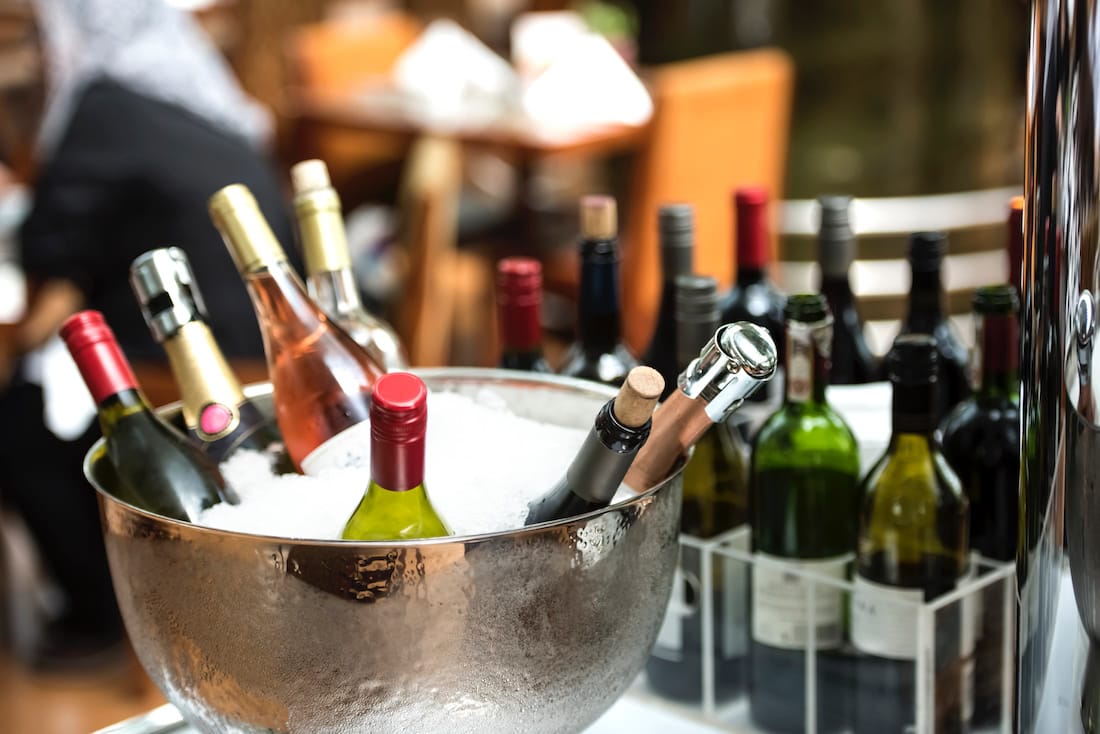
You should always serve wine cooler rather than too warm, as the wine warms up as soon as it is poured into the glass. Depending on the ambient temperature, its temperature can increase by up to 2 °C in the process. In the glass itself, the temperature increases by around 1 °C every five minutes. Depending on the ambient temperature and filling quantity, this value can of course vary.
So to prevent your wine from heating up quickly, you can chill your wine glasses before serving or simply serve the wine colder. It gets warm all by itself.
Hold wine glasses correctly
The wine glasses used also have an effect on the temperature of the wine. Wine glasses with long stems prevent you from raising the temperature of the wine with your body heat. Therefore: Do not touch wine glasses with stems by the goblet. This not only looks better, but actually makes sense. Wine glasses without stems are becoming increasingly popular and are extremely practical, especially when traveling. You should always touch these above the wine and, if possible, only with your fingers.
Gentle water bath for red wines
If you have a spontaneous visitor and want to serve your (still) ice-cold red wine, you can bring the bottle to the right temperature with a water bath. If you want to bring a wine that is about 10 °C cool to a drinking temperature of 15 °C, you should use 20 °C warm water. Put the bottle in the water bath, wait eight to ten minutes – and you’re done. In open air (also 20 °C), your wine would need about two hours to reach the right temperature. Unless your visitor is traveling halfway across the country to stop by for a glass of wine, you may prefer the water bath method.
Cooling cuffs: Inexpensive. Simple. Effective!
It comes as it must and your visitor would prefer white wine, which of course you just have not cooled. What now? If you want to chill white wine effectively, it’s a good idea to always keep a few cooling sleeves in the freezer. The cuffs are inexpensive, effective and very easy to use. Take one out of your freezer, pull it over the bottle and after five to ten minutes your wine will be at the right temperature. A little tip: Turn the bottle upside down from time to time so that the temperature is evenly distributed in the bottle.
Ice + salt: Arctic cooling with a cold mixture
If you value style more, you’d better go for the champagne cooler. With the help of table salt, ice, a kitchen scale and some physics, you can bring your wine to the right temperature very quickly. The best way to do this is with crushed ice. But for the ultimate in cooling, it’s not enough to simply fill the bucket with ice and sprinkle some salt on top. For your arctic cold mix you have to pay attention to the right mixing ratio.
Place the champagne cooler on your kitchen scale and press the tare button. Now add a thin layer of crushed ice. Then add 33g of table salt per 100g of ice cream. Repeat the process until you can put the bottle in upside down(!). Then continue filling the bucket with the bottle with ice and salt until only about ten centimeters of the bottom of the bottle protrude. Always observe the correct mixing ratio of ice and salt.
With the refrigeration mixture to -21 °C
The mixture produced is a refrigeration mixture and can cool down to almost -21°C – all by itself. How to do it? We don’t want to go too deep into the matter now, so just a brief explanation: The salt melts the ice and at the same time lowers the freezing point of the water. Melting the ice requires a lot of energy. Physically, heat is a form of energy. Your warm wine bottle is thus a wonderful “energy source”. The cold mixture extracts the energy from the bottle and the environment in the form of heat, thus cooling it down. Because cold is only the absence of heat, to come back to physics.
If you listened to us and put the bottle upside down in the bucket, you can pull it out after about five minutes and turn it over briefly – as already explained with the cold cuffs. After that you can put them back into the ice. Now you can see why you should put the bottle upside down into the ice. Your refrigeration solution has turned into a hard block of ice and you would only be able to free the bottle from the ice with heavy equipment.
Once your wine has reached drinking temperature, it’s best not to put it back into the mix. There is a risk that the wine freezes and the bottle flies around your (and your guests’) ears. Cheers!
Wine refrigerator: always at the right temperature
If the above options are too stressful for you or you always have more than 20 to 30 bottles of wine in the house, a wine refrigerator is a practical investment. With such a device, you not only keep your favorite wines always at drinking temperature and are prepared for spontaneous visits. You also ensure that your noble drops can develop and mature in the bottle. Learn more about wine refrigerators and whether you really need one here.
Drinking temperature and external circumstances
In addition to the factors already mentioned, there are a few others that influence the proper drinking temperature of wine. Did you know that you taste more in the morning than in the evening and that it makes a difference whether you drink a red wine in summer or winter?
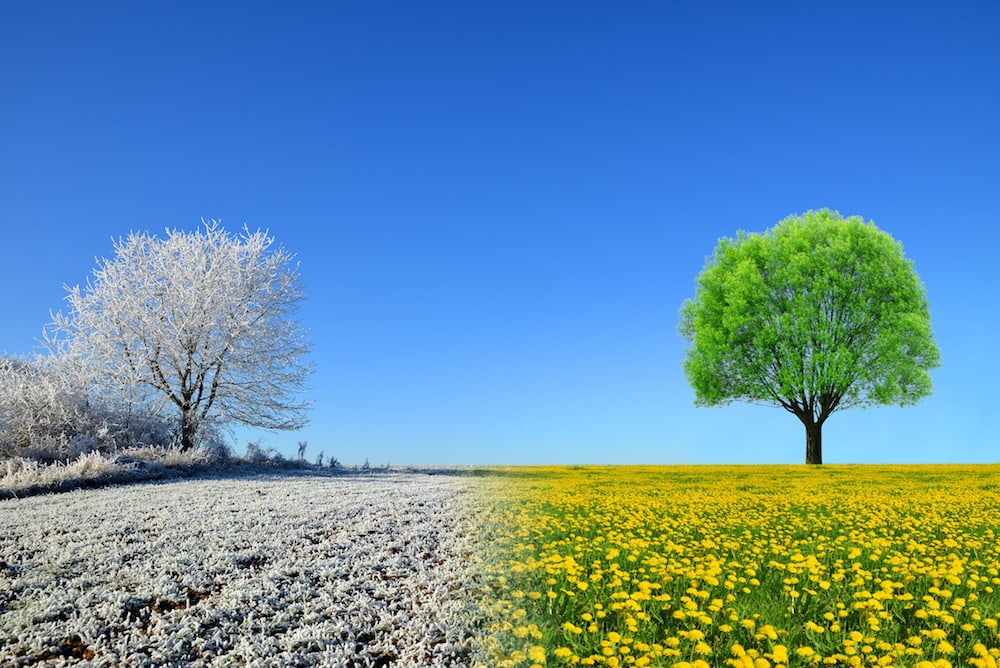
Drinking temperature during the day: colder in the morning, warmer in the evening
You are most awake shortly after getting up. Fresh and refreshed, our body is bursting with energy, which it uses up during the day. This also applies to your olfactory and gustatory nerves. In the morning, these are significantly more sensitive than in the evening. For this reason, many professionals taste wines in the morning hours.
A breakfast wine should therefore be served one to two degrees cooler than the wine in the evening. You could also say: we have to adjust the temperature of the wine to our performance. Just try it yourself.
Summer or winter? Crucial for the drinking temperature
Sitting on the terrace in summer temperatures and enjoying a nice glass of wine – wonderful! However, when outside temperatures are high, you should always serve wine colder than usual. Red wine drinkers in particular are familiar with the problem: wine that is actually at the right temperature of 18 °C simply doesn’t taste good in the heat. So briefly in the refrigerator with it.
If you taste sparkling wine or champagne outdoors at 5 °C in winter, you won’t taste much. White and sparkling wines in particular must sometimes be served much warmer here than under “normal” circumstances. You can observe this effect with ice cream. It tastes great cold. But if you let it melt and taste the warm liquid, it tastes extremely penetrating. It is specially flavored for consumption as a frozen product and is much more intense when warm.
The right drinking temperature: Always stay cool
Although you can make a science out of the right serving temperature for wine, you shouldn’t let that scare you away. If you prefer the wine a few degrees cooler or warmer, that’s absolutely fine. Wine is and will always be a stimulant and how you enjoy it the most is something only you can decide. The right drinking temperature depends on so many factors and who feels like reaching for the thermometer all the time? Exactly! If we can give you one thing to take away, it’s that today red wines are usually drunk too warm and white wines are served too cold.
Now, grab a bottle of your favorite wine and treat yourself to some relaxation. After such a long article, you truly deserve it.
Image source Cover image: ©Kelsey Chance – unsplash.com


